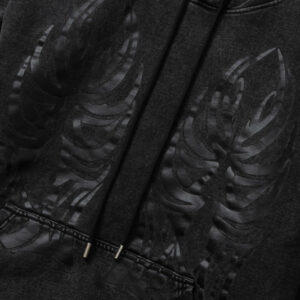In times of war, the clothing worn by soldiers is not just a matter of fashion but a carefully considered decision with military, strategic, and logistical implications. The question “Who decides war clothing?” may seem simple at first glance, but the reality is more complex, involving input from military leaders, designers, manufacturers, and even political figures. These decisions are critical in ensuring soldiers’ safety, mobility, and effectiveness on the battlefield. This article explores the various factors that influence war clothing and the entities responsible for making these decisions.
The Role of Military Leaders in War Clothing Decisions
Military leaders play a central role in determining what soldiers wear during combat. Their primary concern is the functionality of the clothing, ensuring it serves its purpose in protecting soldiers while maintaining operational efficiency. In modern warfare, soldiers face extreme environments, from desert heat to freezing cold, and their clothing must be designed to withstand such conditions. Military leaders assess these needs by consulting with experts in materials and textiles, ensuring that the clothing provides adequate protection against the elements, physical threats, and fatigue.
While military leaders oversee these decisions, they often rely on advice from experts, including designers and engineers, to ensure the clothing meets specific needs. These experts might be responsible for creating specialized uniforms, camouflage patterns, and protective gear, all with the aim of giving soldiers a strategic advantage. In some cases, military leaders may collaborate with external suppliers and manufacturers who have expertise in producing durable and functional fabrics.
The Influence of Fashion and Comfort on Military Apparel
Although the primary goal of military clothing is practicality, comfort and even fashion considerations have come into play in recent years. For instance, the introduction of garments like the hoodie in military contexts highlights the balance between comfort and utility. While the hoodie may not be standard issue in combat situations, it is increasingly used in training or off-duty settings for its warmth and comfort. Military personnel are often required to wear gear for extended periods, so ensuring the clothing is comfortable is crucial for maintaining morale and minimizing physical strain.
This shift in thinking represents a broader trend toward integrating more flexible, modern designs into military apparel. These changes may be influenced by the increasing participation of civilian fashion designers and companies, who bring their expertise in creating garments that prioritize comfort and movement. The result is military clothing that not only functions effectively but also accommodates the personal preferences and comfort of soldiers, thus improving overall performance and well-being.
Government Agencies and Defense Contractors
In many countries, government agencies are directly involved in decisions regarding military clothing. National defense departments typically oversee the development of uniforms and gear, working with defense contractors to produce and distribute the necessary items. These contractors, in turn, play a crucial role in shaping the clothing decisions, as they are responsible for sourcing the materials and manufacturing the designs specified by the military.
These contractors often work with military experts to create specialized clothing that meets the exacting standards required in combat situations. These garments are designed to be durable, lightweight, and, most importantly, provide protection against a variety of threats such as bullets, shrapnel, and extreme weather conditions. In addition to the physical requirements, contractors may also incorporate advanced technologies into the clothing, such as materials that provide camouflage or even adaptive clothing that changes properties based on the environment.
The Impact of Technology on War Clothing Design
Advancements in technology have dramatically altered the way military clothing is designed and manufactured. High-tech fabrics that regulate temperature, wick away moisture, and even offer protection against chemical agents have become commonplace in modern military apparel. This technological evolution allows for garments that offer unprecedented levels of protection and comfort, further ensuring that soldiers can perform their tasks under the harshest conditions.
Moreover, military clothing manufacturers are now using advanced design techniques, such as 3D printing and digital modeling, to create clothing that fits better, is lighter, and offers enhanced mobility. These technologies are transforming traditional military uniforms and gear, enabling a level of customization that was previously unimaginable. As these technologies continue to evolve, it is likely that military clothing will keep adapting to meet the challenges of modern warfare.
Public and Political Influence on Military Fashion
In addition to military leaders and defense contractors, public opinion and political factors can also influence the decision-making process when it comes to war clothing. While military attire is often dictated by the practical needs of combat, there are occasions where political or social considerations shape the decisions. For instance, the choice of camouflage patterns and uniform styles may reflect a desire to convey unity, national pride, or a specific image of military strength.
Political leaders may also weigh in on the design of military clothing, especially when it comes to the procurement of materials or the selection of contractors. In some cases, the desire to reduce costs or promote national industry may influence these decisions. These external pressures can sometimes result in compromises between functionality and cost or political considerations, which may have an impact on the overall effectiveness of the clothing.
Conclusion
In conclusion, the decision of who decides war clothing is a multi-faceted process that involves a combination of military expertise, technological advancements, and external influences. Military leaders, designers, and contractors work together to create clothing that balances protection, comfort, and functionality. Over time, the design of military uniforms has evolved to include more comfortable elements like the hoodie, showing a shift towards incorporating both practicality and comfort. Ultimately, the goal is to equip soldiers with clothing that ensures their safety and effectiveness on the battlefield, while also considering the broader social, technological, and political factors that shape these Decisions.
